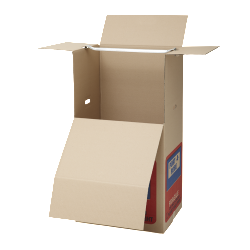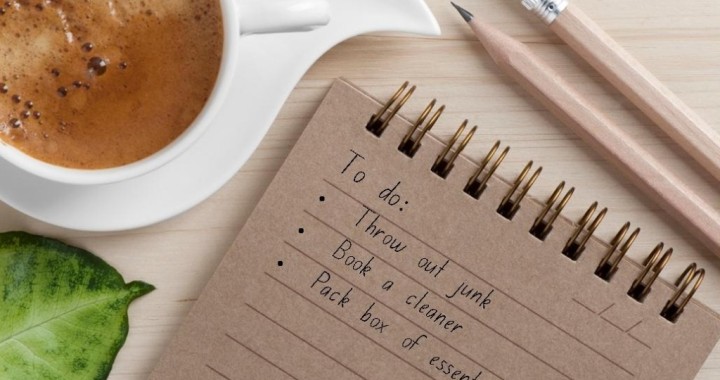Who can’t use some moving tips when they’re packing up their whole life for a new home? If you’re among thousands of people who have picked up and moved their family to a new home or a new community, you have fresh memories of some of the ups and downs or thrills or frustrations of moving.
Drawing from personal experience, I know there are lots of ways to help make your household move easier and more smooth. Read here for help to get your life, and your possessions, organized for a peaceful and exciting move.
Make a list.
Write everything down! You’ll thank yourself later. Before you pack even one box, create a simple record keeping system. Create a computer-printed list of numbers with a space to write the contents. Or have a spiral-bound notebook for the job. You’ll place a number on EVERY box you pack and list the contents on your list. Don’t put the list down unless it’s in a place you’ll call Packing Central. This is where you’ll find your labels, marking pens, box tape, and other supplies. When describing the box contents, be specific — “A-D files” is better than “files”, and “Tulip dishes” rather than “misc. kitchen”.
Free Shipping for whole EYRE PENINSULA on orders over $110!
Have plenty of supplies.
Don’t make me say this twice– you’ll need LOTS of boxes–probably more boxes than you think, and having enough boxes will make your life easier! (If you buy your boxes from US, you can always return unused boxes for a refund.)
Have about 10 boxes set aside to use for last minute items on moving day, such as bedding, clothing, and cleaning supplies. You’ll need strong plastic packing tape to close up the boxes securely. Use unprinted newsprint (newspaper can stain your items) or packing paper or bubble wrap to wrap and cushion household good. Again, you’ll need lots more supplies than you think, so get extra so the packing can go smoothly. Return any unused supplies after the truck is packed.
 Utilize wardrobe boxes.
Utilize wardrobe boxes.
These tall boxes are perfect for bulky, lightweight items such as comforters, pillows, and blankets, as well as clothes that need to remain hanging. Call your mover to ask the width of the wardrobe boxes they’ll be bringing. Then measure the clothes in your closets (including coat closets) to see how many wardrobe boxes you’ll need. You can also use them for closet storage boxes, shoe boxes, and other bulky items such as fabric bolts, large baskets, or gift wrap tubes.
Don’t make the boxes too heavy to lift, however. One mover told the story of someone who put a bowling ball in a wardrobe box! When the box was lifted off the truck the bottom gave way, sending the bowling ball on a wild ride down the ramp, across the street to the gutter, then down a hill where it finally came to rest in a roadside ditch. (Is that a strike or a spare?)
Strategize wardrobe box use.
Moving companies will be happy to deliver boxes ahead of your moving day. Or if you’re doing the move yourself, get things organized as early as possible. A few days before your move, fill some sturdy handled shopping bags with bulky closet items such as shoes, sweaters, belts, and jeans. On moving day, fill the bottom of the wardrobe boxes with some of the shopping bags, then add your hanging clothing. Pack hanging items tightly so things won’t move around and fall off of hangers. Finally, cover the shoulders of your clothes (a dry cleaning bag works well), then add a few purses or sweaters on top. You’ll have fewer boxes, and closet items remain together. Also, the shopping bags will make it easier to retrieve your belongings from the bottoms of a tall wardrobe box.
Color coordinate.
Designate a color for each room in the new home, such as yellow for kitchen, orange for dining room, etc. Apply colored stickers on the box near the box number. In your new home. Put a matching sticker on the door to each room. The movers will know where to put everything when they arrive at the destination. It’s also helpful to post a big sign on the wall in the room where you want boxes stacked, (“Boxes here please”) to keep them out of furniture and traffic areas.
Keep things together.
Insist on keeping things together when you or the movers are packing boxes. Keep bookends with books, light bulbs with lamps, and extension cords with appliances. Small, loose parts can be attached to the item they belong to with tape or placed in small envelopes — to keep picture hooks with pictures, shelf brackets with a bookcase, a special wrench and bolts with the wall unit.
Keep larger corresponding items (such as a cable TV cord) in resealable bags, and tape these to the underside or back of the item. As a backup, have a “Parts Box” open on the kitchen counter and fill it with cables, cords, parts, pieces, brackets, or nails that are removed from any items of furniture. Keep this box with you, or mark it well with a rainbow of colored stickers so it can be easily located on move-in day.
Pack ahead.
Anything you can pack ahead will save you time on moving day. If it’s summer, get your winter clothes out of the way. You don’t really need 5 radios or TV’s around your house for the last few days there. Box up your shampoo and extra toothpaste and live out of a travel cosmetic case for the last week or two. Pare down cooking utensils and food supplies to bare essentials. Wastebaskets can also be packed (put things in them!) while you switch to using plastic grocery bags (hang them on a cabinet door or door handle to collect trash.)
Use your luggage.
Fill luggage and duffle bags with clothing, sheets, towels, and paper goods. Even for local moves you’ll be able to quickly spot your navy suitcase holding your favorite sweaters, whereas “Box #189” might remain elusive for days.
Safeguard valued items.
It’s a good idea to keep valuable possessions, such as silverware, collections, or antiques, with you. If you have a long move and no room in your car, bury the items in a box titled “Misc. from kitchen pantry”. Either way, check your homeowner’s insurance to see how you are covered during the move, and if you need additional insurance from the mover. Also, find out what paperwork (receipts, appraisals, and photos) you might need to file a claim in case of loss.
Keep important papers with you.
Your list of “important” papers might include: birth certificates, school records, mover estimates, new job contacts, utility company numbers, recent bank records, current bills, phone lists, closing papers, realtor info, maps, and more. Don’t leave these with the mover. Keep them with you!
Personal boxes.
Use brightly colored storage tote boxes, one for each person. Let each family member fill theirs with items they’ll want ‘right away’ in the new home — a set of sheets, a towel, a couple of extension cords, a phone, nightlights, address book, pens and paper, keys, kleenex, and travel cosmetic case, and so on.
Moving may not be the most fun you’ve ever had, but planning ahead will go a long way toward making the process bearable.

